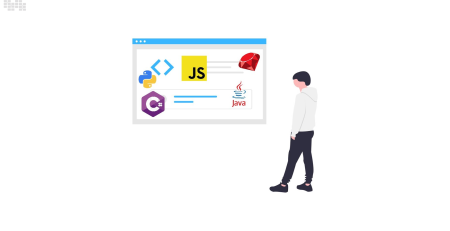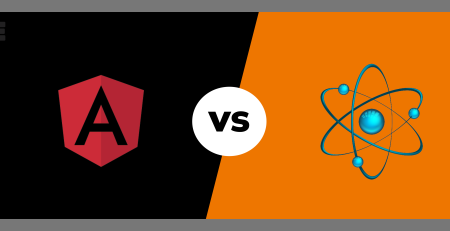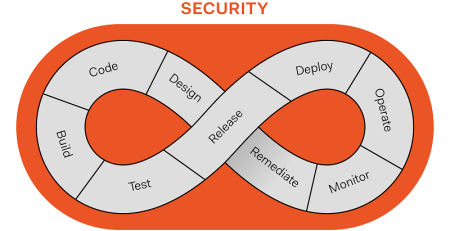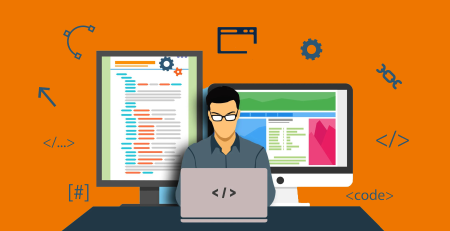Code Quality In Software Development
Businesses all across the world rely on technology to gain a competitive edge. They rely on the creation of user-friendly custom software to guarantee efficiency and expansion.
The market for corporate software is booming, with spending at $491 billion. This makes us doubt the standard of the development of the custom software.
You might wonder why code quality matters. The coding standard used in software development is essential to creating effective software. To do this, you must look for the best software development company that can assist you in writing high-quality code.
It’s challenging to release high-quality code and software. For the creation of custom software, code quality must be taken into account. The provision of high-quality code guarantees that it is easily editable, has proper indentation, makes effective use of comments, and is motivated by simplicity.
High-quality coding increases data portability, reduces overall development costs, and increases the durability and resilience of software systems. If you are unsure about providing such a code, you would rather hire professionals.
As an alternative, outsourcing software development allows you to quickly contact these professionals, who guarantee excellent code at every stage of the software development process.
Since a software application’s foundational component is its code quality. Let’s first establish what it is in reality.
Let’s begin with the basics of coding in custom software development.
What is code quality?
Code quality refers to a collection of standards and qualities that the organization has established and prioritized. When assessing the quality of the code, you can take into account the functionalities, language, and coding standards. These may vary based on your organization’s particular business focus and your team’s needs.
Since high-quality code is well-organized, tested, and hence more dependable, it provides superior security and protects consumers from data danger.
Since maintaining it is essential to the software development process, software engineers frequently refer to the “code quality.” Measures of code quality show how effectively developers communicate with one another.
Even if the code produced by two developers working on the same piece of software may appear quite differently, they can maintain a constant level of code quality. For an automotive developer, great code quality might be the norm, but full-stack developers might require other requirements.
There are various qualities that set apart good code from bad code; there is no one-size-fits-all checklist for writing quality code.
A quality code would include the following:
- Compatibility– The ability of software to operate on all of the devices and operating systems it is designed to support.
- Documentation– Source code documentation is created continuously during the project to ensure it is complete and up-to-date.
- Maintainability– This refers to the ease with which software can be maintained, corrected, or improved.
- Optimization– An optimized code structure ensures that the code isn’t unnecessarily difficult or cumbersome.
- Readability– Clearness of the code and its structure are made obvious by following coding conventions such as standard indentation and style.
- Security– Quality code for software development requires regular scanning for vulnerabilities, such as malicious code, to prevent unauthorized access.
- Understandability– Increased time efficiency by making the code more understandable for new developers.
Low-quality source code is
- Written in a convoluted format that serves no purpose.
- A challenge for programmers to grasp
- Difficult and costly to maintain in a longer run
- Bound to create problems with multiple devices and operating systems compatibility
- Full of vulnerability and is easy to exploit
- Hard to get control on.
It is not a task to be drawn out; rather, it is an investment in the success of your enterprise. It’s essential to lowering technological debt. A well-written piece of code is easy to understand, modify, and add to.
It is easier to evaluate intelligible and consistent code, which reduces the time required for maintenance. The software maintenance department can assist with this.
What are coding standards?
Coding standards are a set of guidelines that specify how a programming language should be used. They assist in describing the associated design, methods, and procedures. Many distinct software parts or those created in that language might be taken into account.
Without following these rules, a bespoke software development code is incomplete.
Coding standards make sure that all developers work on the project consistently in accordance with the standards that help them adhere to a particular strategy. As a result, these coding standards guarantee consistency throughout all coding initiatives.
Every programming project aims to appear to have been written by a single programmer or developer once it is complete.
Reasons for coding standards
You might eventually suffer some unfavorable effects if you don’t adhere to the software engineering code standards. It will focus on some of the most important problems in greater detail. Here are a few justifications for thinking about observing code standards.
Security issues
If standards are not upheld, the code may be open to attack from outside sources or defects may appear as a result of poor coding quality.
Performance
Coding errors may degrade the code’s quality. The end result is a bad user experience and the ability to quickly spot problems with the system’s security and functionality.
Readability & optimization
Instead than wasting time and money trying to optimize code, it is preferable to write code that is simple for engineers to understand. In collaboration with the QA team, develop a unique module and guarantee complete test coverage.
Prioritize architecture
Since they don’t have enough time to prepare, people frequently speed through activities. However, calamity strikes in nine out of ten of these circumstances. Starting to write code before considering the architecture is a shoddy job.
Before you begin, you should be familiar with the purpose, usage, structure, testing, debugging, and updating of the code.
Importance of code quality
For the creation of custom software, code quality is crucial for a number of reasons. Software’s ability to function depends on the quality of its code. It’s the most important KPI for gauging the success of the software project.
To meet quality goals, maintaining code quality requires consistent efforts and a committed software development team. This is essential for a software project, yet when stressed for time, developers frequently compromise on quality.
While it could be tempting to take shortcuts in order to meet a deadline, it’s essential to write code that adheres to the highest standards of code quality. It is what can ensure that your code endures under the demanding conditions of the software.
Automated code checking tools compare source code to a list of established best practices to identify places that may benefit from improvement. But this is just one of many ways to improve the quality of your code.
It is hard to ignore the importance of good code in the creation of custom software. Bug patches and security upgrades cost businesses a fortune. Here are a few advantages and reasons why firms should use high-quality code.
Making software robust
This is where the robustness of the software is put to use—when a user makes a mistake in the application, they receive an unexpected message that prompts them to act. The application can manage operational errors even in the presence of extraordinary conditions. High-quality software’s error messages are simple for the user to understand.
Increasing readability and ease of editing
Excellently written code is written in a way that is simple to comprehend. As part of the writing quality process, best practices, such as comments, proper indentation, particular notations, and a logical flow, are important considerations. Since it is simpler to comprehend and implement changes in high-quality code, it is also simpler to modify.
Sustainable software
If the software is able to withstand challenging conditions over time with minimal changes, you can consider it sustainable. Although low-quality software does not even last half that long, the average lifespan of software is thought to be six years.
Software updates are required due to the hardware and operating system changes that are always occurring. In contrast to years of trouble-free operation with poor quality code, conducting transformations is difficult and frequently impossible with good quality code.
Easy transferability
As was already mentioned, well-written code is simpler to comprehend and keep up. Measures to improve code quality also facilitate the porting of software to various platforms. With only modest adjustments, custom software creation with high-quality code guarantees simple software migration across several platforms.
How to maintain code quality?
If it’s simple to add and remove features from a piece of code, it’s considered to be “maintainable.” It could take longer than normal to maintain poor-quality code. Additionally, waiting for it to get better might be a huge waste of time and money.
The overall cost and the quality of the code are tightly correlated. Functional quality tests, as opposed to style guides and linters, ascertain whether your code actually functions.
Let’s take a quick look at the factors that help maintain quality code for custom software development.
- Add comments to every method, function, and piece of logic implemented.
- Using the correct data types and names for variables, classes, and other data elements.
- Ensure using the right code style and language.
- Implementing automated testing as a prerequisite guarantees software satisfies all criteria and responds to its different inputs.
- Accomplish the goal of reducing a class’s complexity by refactoring and selecting the proper design pattern.
- Try repurposing the general-purpose code.
Running a unit test is one of the best practices for ensuring high-quality code. Through simulating the behavior of external dependencies, it enables the examination of a single piece of software. While integration testing looks at how different components work together, end-to-end testing investigates the entire client-server cycle.
The following tools can be used to run unit and integration tests:
- Jasmine
- Mocha
Key tools to use when performing unit and integration tests:
- Karma (for angular)
- Cucumber
- Protractor
How the code quality can impact your custom software development
Software programs are constantly changing in addition to growing larger and more complicated. Complexity can be expressed in several ways. For instance, they might be the result of shoddy coding, even though some intricacies are necessary for the app to function.
There are many reasons why software complexity is important to businesses
- Software procedures can handle the complexity of a problem domain. Not all this intricacy is annihilated. Problems are always more difficult to fix with software than with the product itself (although well-built software hides this fact).
- By growing its complexity, a product may accommodate an ever-increasing number of use cases (often during deployment). Concealing or altering features using a code depends on their relevance to various industry categories, firms, or people, thereby expanding your product’s market scope.
- High criteria for usability, readability, observability, robustness, and aesthetics are hallmarks of high-quality software code. All of these factors need more code, which raises the bar for the overall system’s difficulty.
Let’s return to the topic of complexity and see how the software may be impacted by the complexity of a code.
Good complexity
It is a level of complexity that adds value or strengthens competitive advantage, elevating your software above the competition.
Bad complexity
A level of code complexity that is challenging to comprehend, maintain, and extend is what is meant by the term. One of the main causes of software failure is its complexity. As was previously noted, the goal and design of the software necessitate a certain degree of complexity, but in a good way.
Bad complexity unintentionally results from implementation mistakes made by programmers or their managers. The ratio of a piece of code’s poor complexity to outstanding complexity is a useful indicator for assessing its quality. Therefore, a significant proportion of “high-quality code” is required for software to succeed.
1.Even though it has (good) complexity, the key benefit of high-quality code is that it guarantees minimal long-term development and maintenance costs.
The amount of time it takes to finish a project that lasts more than a few weeks is greatly influenced by the quality of the code. A business’s bottom line can be quickly impacted by poorly written software code. The activities are in danger since this substantial portion of the total ownership costs is involved.
According to one study, complexity accounts for about 17% of the cost of the entire software lifecycle and 25% of the costs associated with software maintenance.
According to a 2018 analysis by Stripe, the global cost of “bad coding” is cited as $85 billion annually. It’s also crucial to include in the costs associated with delivering subpar software or losing market share to a competitor, which are not taken into account in these estimates. Dealing with flawed code early and frequently is the only logical course of action.
2.The satisfaction of programmers at work can be strongly impacted by the quality of the code. Businesses cannot afford to ignore this relationship if they are serious about retaining top talent, boosting morale, and lowering employee attrition.
Software project success or failure significantly depends on the amount of workers departing the firm. Errors are more likely to occur when programmers are working on new jobs.
3.Lastly, code quality is the driving force behind product quality. It is less probable that high-quality code would have bugs, the leading cause of customer complaints. The relationship between code quality, commercial success, and vulnerability reduction are also possible.
Best practices for improving the code quality
The tactics used in the development of custom software are another component. You must examine the code, enhance the codebase, guarantee efficiency, and generally satisfy your team if you want to produce high-quality code. Consider adopting some of these recommended practices to assure developing a quality code.
Use relevant coding standards
Coding standards should be used as one of the fundamentals while writing high-quality code. Using a coding standard ensures consistency across coworkers and improves the dependability of the codebase. The best approach entails mentoring and supporting important developers. A tool for static code analysis can help.
Analyze the code before reviewing it
It is mandatory to assess code as it is written before it is subjected to a code review. With this technique, developers may quickly and cheaply rectify mistakes.
Follow best practices for code review
One of the top three strategies for guaranteeing code quality is code review. Code quality is significantly improved through extensive and efficient code review.
Refactor code when necessary
You can simultaneously simplify understanding and tidy up the codebase by refactoring out-of-date legacy code.
Follow standards for naming variables
Following the common naming conventions for your code variables is necessary to create a better code.
Implement API best practices
To track development costs and how they effect end-user value, performance must be strong. According to reports, businesses across all industries may spend 42% more on cloud services than is necessary.
Establishing a standard for your team’s usage of APIs, data formatting, and API configuration is an excellent place to start.
Analyze bugs
Your code will almost certainly contain mistakes at some time. Look for solutions to these problems. Finding problems and analyzing them is an important aspect of the overall process because learning from mistakes is critical to become a better developer.
Analyze a problem’s impact as it develops. Consider it in terms of whether it is a high- or low-priority problem. Fixing a problem should be done immediately if it is high priority.
Remove resource leaks and memory errors
To gauge how successfully a custom software development manages failure, code reliability is essential. On the other hand, it quantifies the chance that your code will fail. Memory problems like resource leaks and null pointer errors can cause software performance to suffer.
Conclusion
It’s just as important to uphold strict standards for code quality as it is to write the code itself. Anytime during the development phase of custom software, the code quality can be improved. This enables you to take into account the essential features of code quality and make use of coding standards to gain from it.
Achieving your business goals depends on selecting the best custom software development firm. In this case, get in touch with our developers at Nile Bits and meet up with our QA team right away because testing affects your software development. Obtaining top-notch code can assist you in creating software solutions that are future-proof.
Regardless of the programming language or framework, maintaining high-quality code across the SDLC results in software that is dependable, stable, and simple to use.
By providing high-quality code, our professionals at Nile Bits can reduce your total cost of ownership for software. We guarantee adherence to the best coding practices in the business.













Comments (2)
This post is very informative and has a lot of valuable insights. However, writing comments on every piece of logic can be considered an added complexity. For example, imagine writing a comment on an overridden ToString function.
Thank you for your comment. I agree with you, code should be readable by itself, but a comment on the top of each method or function would give enough information of the developer who is going to use it.